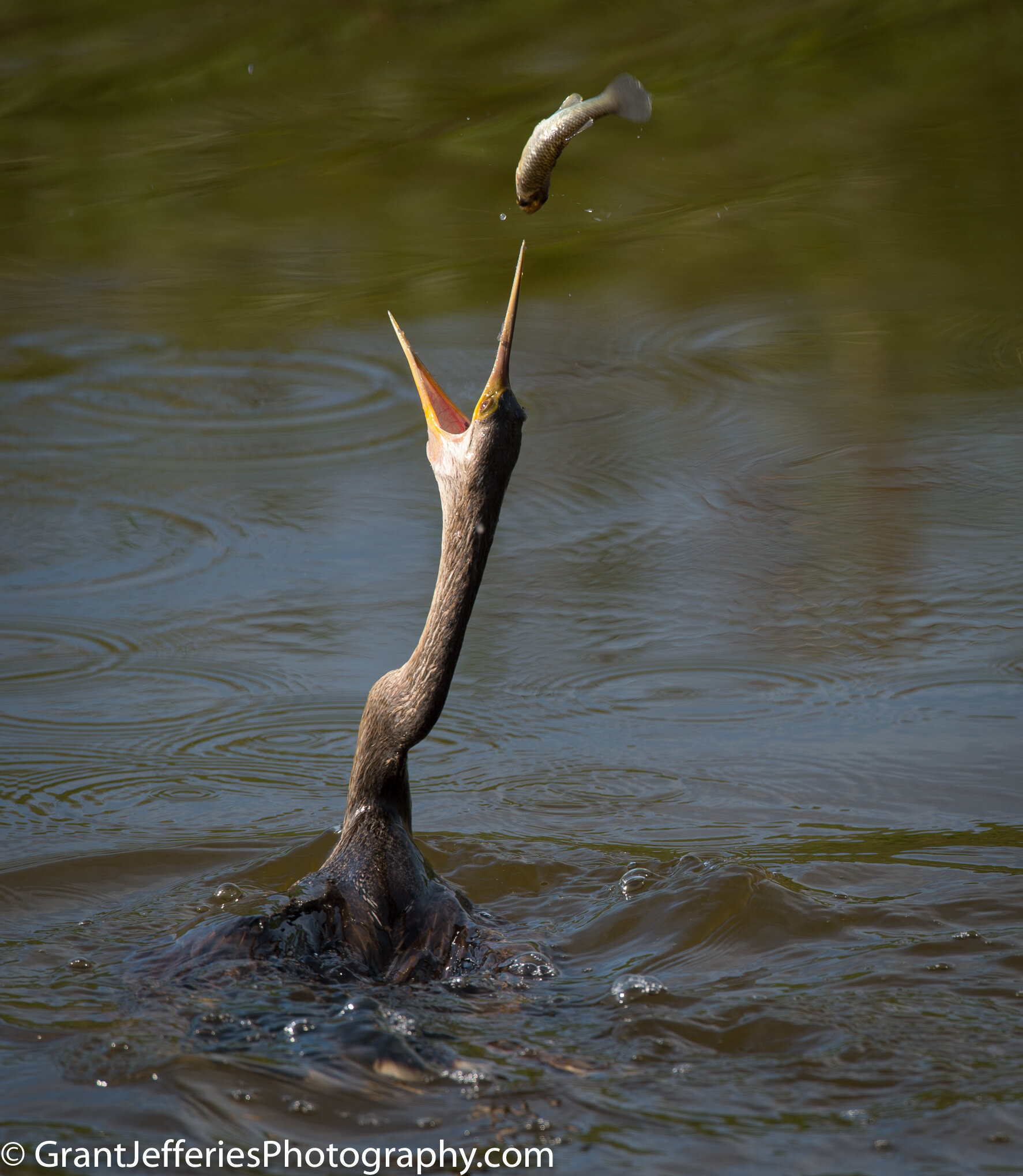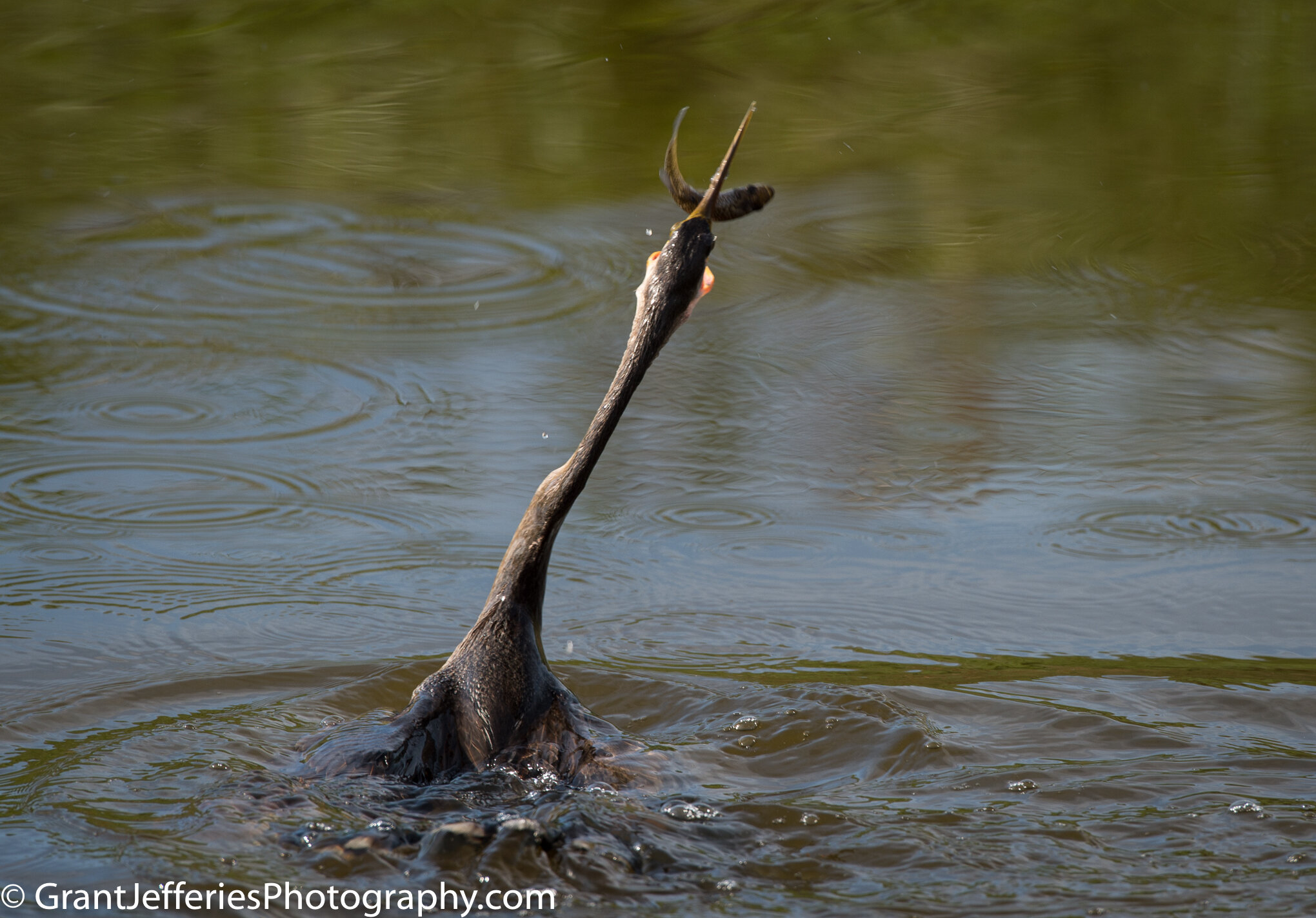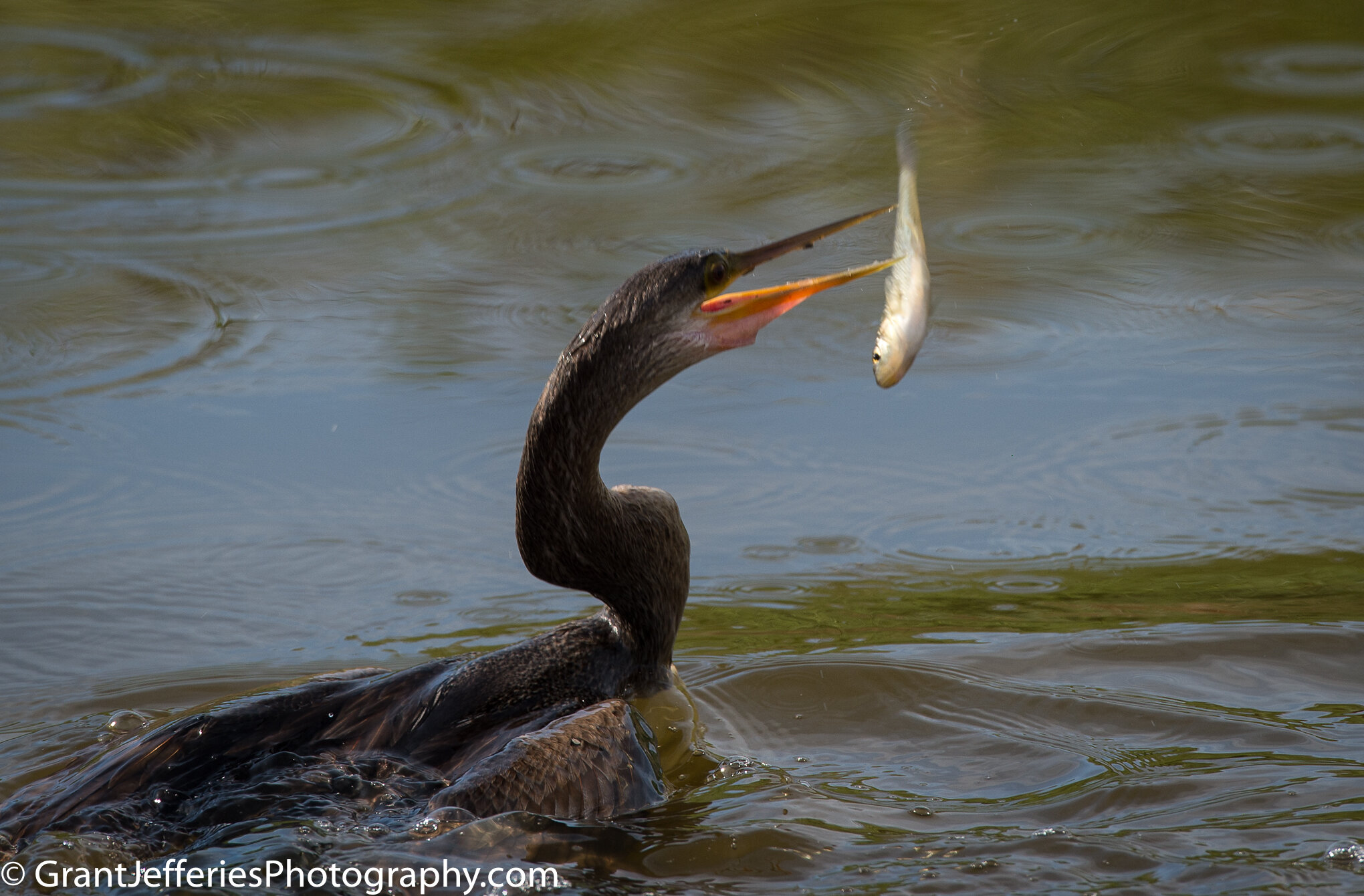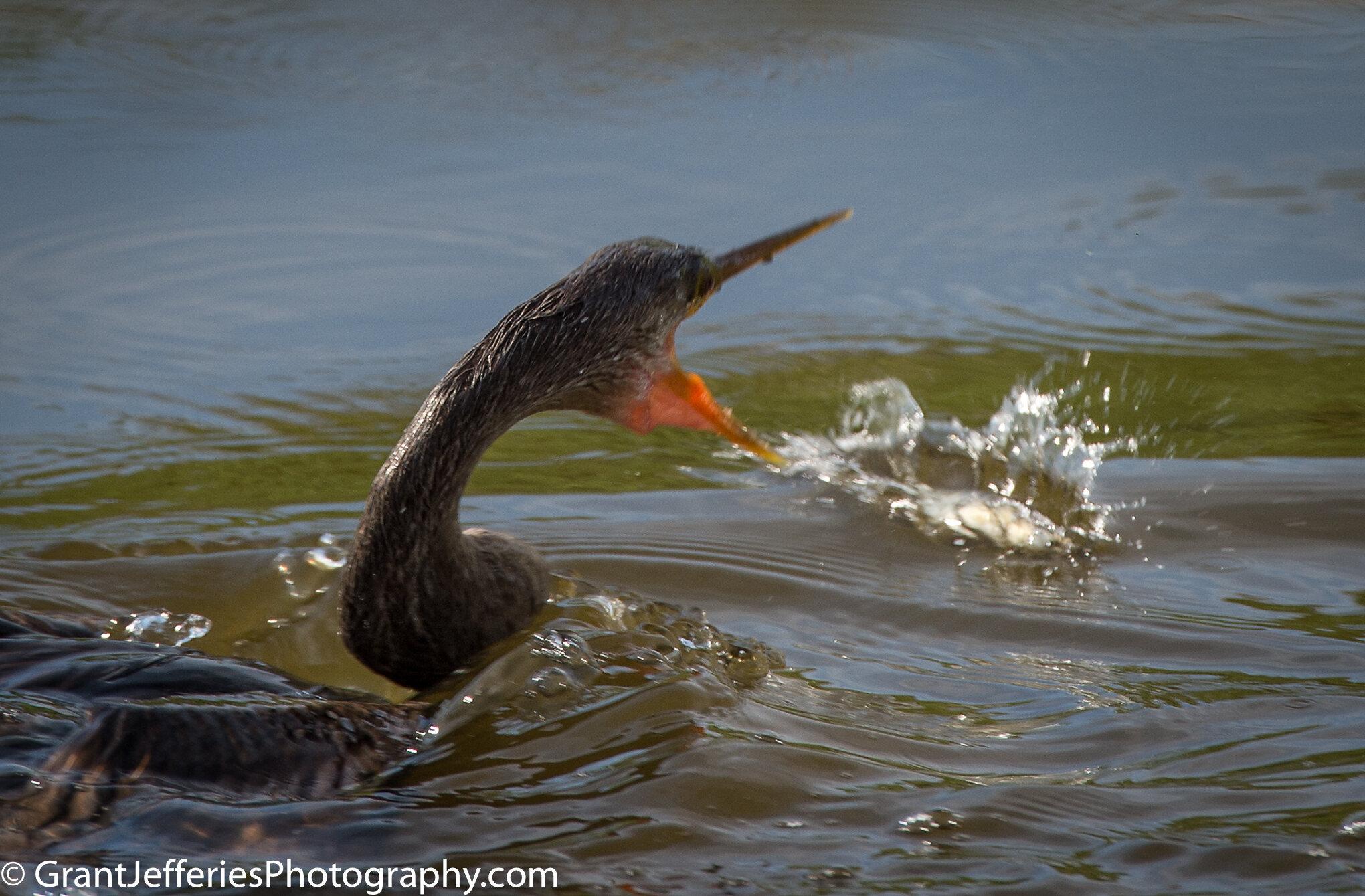I’m often asked how I get so many photos of wildlife doing something special, such as two birds dancing or a kingfisher diving for a fish and coming up with a delicious morsel. Like in baseball, it’s all about anticipation and follow through. In baseball you’re not done when the ball touches the bat, and in photography, that first strong photo doesn’t mean you’re done shooting a subject.
I do spend a lot of time waiting for something to happen. I wait for the sun to move the shadows, for birds to get into the perfect spot for the shot I envision and I wait for the birds to complete whatever action they may have started. If you don’t have patience, you may watch a perfect moment get away from you.
My photo of two birds dancing that was featured in the exhibit at the Bishop Museum of Science and Nature and that is included in my 2020 calendar, was actually part of a series of photos. It starts with a close-up of the male with the feathers up on his head, seemingly styled to attract a mate. The next photo is him bringing a fish to the female that caught his eye, then the dance begins, head to head and a foot in the air. While that’s the shot that is most popular, just like the male bird, I continued with the follow through and have a shot of him sealing the deal with the female bird, who he nests with for the rest of the season.
That series of shots tells a story. And that’s what makes photography interesting and allows your best work to stand out. This morning I watched an anhinga fishing for his breakfast. I know, I know, fishing shows don’t always have a lot of action. You have to be patient, but patient tends to pay off. I saw the anhinga come up with his breakfast and then toss it in the air, before he swallowed it. That was the shot I was hoping for, but I knew I wasn’t done. I stuck with him as he tried to catch the fish. This time it was a throw and a miss! The one that got away. He was one unhappy anhinga, but I walked away with a satisfying story.




